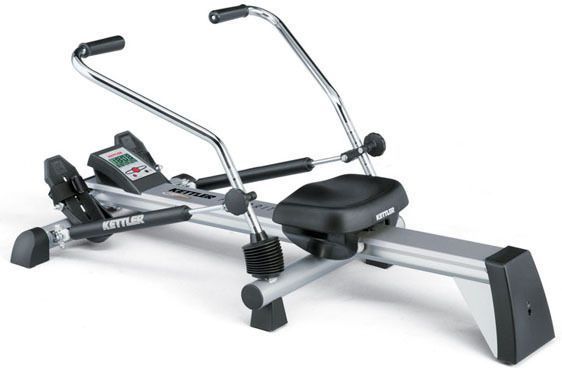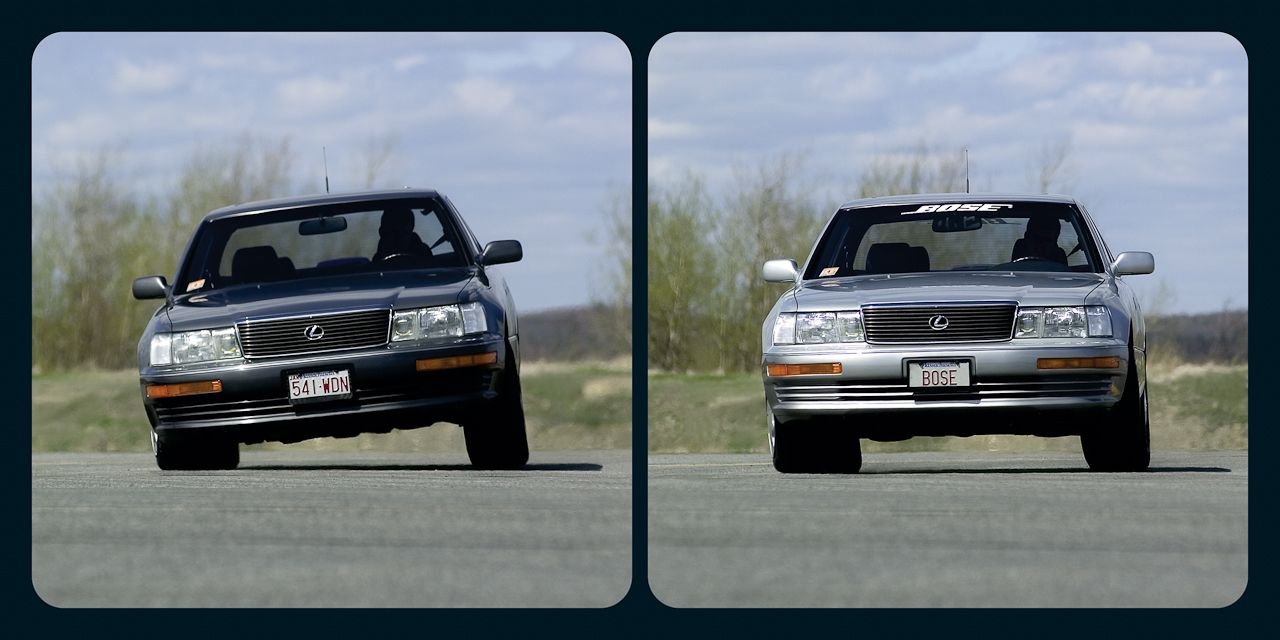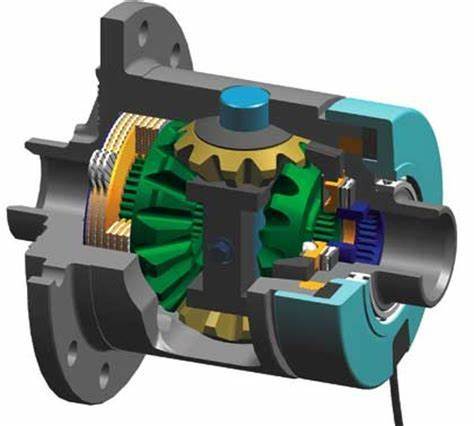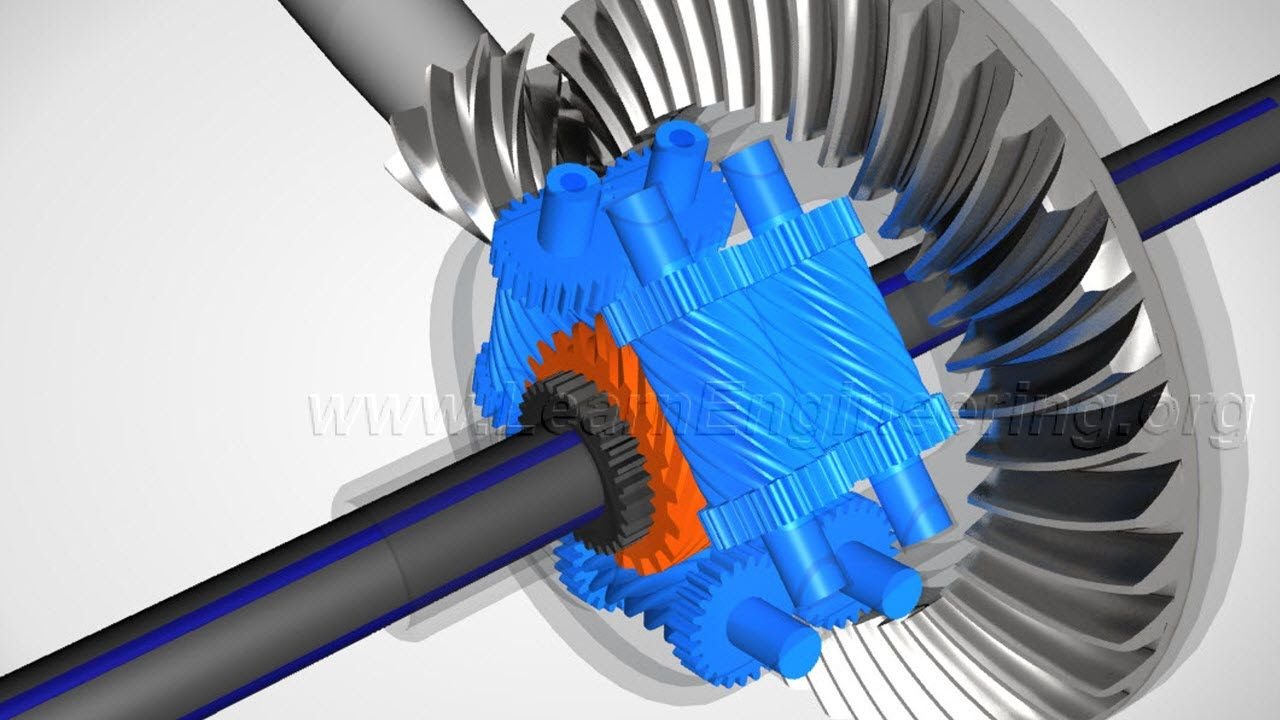Electronic dampeners? Costly repair
#31
Thank you for the in-depth and wide-ranging reply, but I do not agree with you when you leave out how shocks can reduce body roll. While your list is important, shocks are a part of the equation. I think GM and Lexus also disagree.
Here you go:
GM link
And Lexus:
Lexus link
I'm sure I can find similar information from a dozen other car manufacturers, but if you or anybody else cars to see that you'll have to look for it yourself 
Here you go:
GM link
The MRC dampers are filled with magnetorheological fluid that is a mixture of easily-magnetized iron particles in a synthetic hydrocarbon oil. For the third generation of the technology, each monotube damper contains a piston with two electromagnetic coils and two small fluid passages through the piston. The electromagnets are capable of creating a variable magnetic field across the fluid passages.
When the magnets are off, the fluid travels through the passages freely; when the magnets are activated, the iron particles in the fluid create a fibrous structure through the passages in the same direction of the magnetic field. The strength of the bonds between the magnetized iron particles causes the viscosity of the fluid to increase, resulting in a stiffer suspension. Altering the strength of the current results in an instantaneous change in force of the piston.
If the sensors sense any body roll, they communicate the information to the ECU, which in turn compensates by changing the strength of the current to the appropriate dampers.
When the magnets are off, the fluid travels through the passages freely; when the magnets are activated, the iron particles in the fluid create a fibrous structure through the passages in the same direction of the magnetic field. The strength of the bonds between the magnetized iron particles causes the viscosity of the fluid to increase, resulting in a stiffer suspension. Altering the strength of the current results in an instantaneous change in force of the piston.
If the sensors sense any body roll, they communicate the information to the ECU, which in turn compensates by changing the strength of the current to the appropriate dampers.
Lexus link
When cornering, it applies increased damping force in response to steering input, yaw rate and vehicle attitude, ensuring exceptional handling and reduced body roll through the turn while also providing a smooth, comfortable ride.

#32
Thank you for the in-depth and wide-ranging reply, but I do not agree with you when you leave out how shocks can reduce body roll. While your list is important, shocks are a part of the equation. I think GM and Lexus also disagree.
Here you go:
GM link
And Lexus:
Lexus link
I'm sure I can find similar information from a dozen other car manufacturers, but if you or anybody else cars to see that you'll have to look for it yourself
Here you go:
GM link
And Lexus:
Lexus link
I'm sure I can find similar information from a dozen other car manufacturers, but if you or anybody else cars to see that you'll have to look for it yourself

The GM ad says that firmer dampers "stiffen the supension" meaning that it increases damping control - no mention of reducing body roll.
The Lexus ad says that it "increases damping force", and this is correct, but then it goes on to say that "it reduces body roll", and this is where the website script writers have it wrong.
That is a website script error.
Layman misinterpreting the language of engineers.
Just talk to a mechanical engineer at a good local suspension specialist down the road.
A senior high school physics tutor could help too.
The valves inside shock absorbers are unidirectional and do NOT act on compression anyway.
They only restrict the flow of oil on rebound.
Go to your local gymnasium, and some of the exercise machines are hydraulic similar to a shock absorber.
If you push slowly, you will find that the hydraulics provide NO/little resistance.
However the harder & faster you press the hydraulic exercise machines - the greater the resistance!
This is due to the exponential viscosity of fluids.
When cornering at high speeds on a billiard smooth surface like a race track, there will be NO violent fast vertical oscillating suspension movements on compression nor rebound to create hydraulic resistance for the shock absorbers/dampers!
Hence shock absorbers/dampers provide NO roll resistance; contrary to what laymen will tell you.
Some of these principles in physics can be difficult to understand...

Last edited by peteharvey; 04-20-19 at 03:49 PM.
#33
We will have to agree to disagree.
The GM ad says that firmer dampers "stiffen the supension" meaning that it increases damping control - no mention of reducing body roll.
The Lexus ad says that it "increases damping force", and this is correct, but then it goes on to say that "it reduces body roll", and this is where the website script writers have it wrong.
That is a website script error.
Layman misinterpreting the language of engineers.
Just talk to a mechanical engineer at a good local suspension specialist down the road.
A senior high school physics tutor could help too.
The valves are unidirectional and do NOT act on compression anyway.
They only restrict the flow of oil on rebound.
Go to your local gymnasium, and some of the exercise machines are hydraulic similar to a shock absorber.
If you push slowly, you will find that the hydraulics provide NO/little resistance.
However the harder & faster you press, the greater the resistance!
This is due to the exponential viscosity of fluids.
However, cornering at high speeds on a billiard smooth surface like a race track, there will be NO violent fast vertical oscillating suspension movements on compression nor rebound to create hydraulic resistance for the dampers!
Hence dampers provide NO roll resistance.
Some of these principles in physics can be difficult to understand.
.
The GM ad says that firmer dampers "stiffen the supension" meaning that it increases damping control - no mention of reducing body roll.
The Lexus ad says that it "increases damping force", and this is correct, but then it goes on to say that "it reduces body roll", and this is where the website script writers have it wrong.
That is a website script error.
Layman misinterpreting the language of engineers.
Just talk to a mechanical engineer at a good local suspension specialist down the road.
A senior high school physics tutor could help too.
The valves are unidirectional and do NOT act on compression anyway.
They only restrict the flow of oil on rebound.
Go to your local gymnasium, and some of the exercise machines are hydraulic similar to a shock absorber.
If you push slowly, you will find that the hydraulics provide NO/little resistance.
However the harder & faster you press, the greater the resistance!
This is due to the exponential viscosity of fluids.
However, cornering at high speeds on a billiard smooth surface like a race track, there will be NO violent fast vertical oscillating suspension movements on compression nor rebound to create hydraulic resistance for the dampers!
Hence dampers provide NO roll resistance.
Some of these principles in physics can be difficult to understand.
.
I provided proof from GM and Lexus that they claim their active shocks reduce body roll. You've assumed that Lexus misinterpreted what their own engineers said and put it on a public website. You also said the link from GM does not mention body roll, when it does. "If the sensors sense any body roll, they communicate the information to the ECU, which in turn compensates by changing the strength of the current to the appropriate dampers" means the ECU stiffens the shocks when it senses body roll to stop the body roll from occurring.
Also, your condescension is growing with ever reply. It is insulting and you might want to tone it back a little, or is that too difficult to understand?
#34
Yup, agree to disagree.
I provided proof from GM and Lexus that they claim their active shocks reduce body roll. You've assumed that Lexus misinterpreted what their own engineers said and put it on a public website. You also said the link from GM does not mention body roll, when it does. "If the sensors sense any body roll, they communicate the information to the ECU, which in turn compensates by changing the strength of the current to the appropriate dampers" means the ECU stiffens the shocks when it senses body roll to stop the body roll from occurring.
Also, your condescension is growing with ever reply. It is insulting and you might want to tone it back a little, or is that too difficult to understand?
I provided proof from GM and Lexus that they claim their active shocks reduce body roll. You've assumed that Lexus misinterpreted what their own engineers said and put it on a public website. You also said the link from GM does not mention body roll, when it does. "If the sensors sense any body roll, they communicate the information to the ECU, which in turn compensates by changing the strength of the current to the appropriate dampers" means the ECU stiffens the shocks when it senses body roll to stop the body roll from occurring.
Also, your condescension is growing with ever reply. It is insulting and you might want to tone it back a little, or is that too difficult to understand?
To obtain hydraulic resistance, you must push hard and fast.
Same with the hydraulic shock absorbers on a motor vehicle.
Driving on a billiard smooth road at 40 mph, and throwing a sharp right, the outer coil springs merely compress and the body leans.
The shock absorber's unidirectional valves do NOT provide resistance on compression; they only provide resistance to the flow of oil on the rebound stroke.
Around a smooth corner, there is NO fast violent vertical oscillation of the dampers to activate hydraulic resistance - hence dampers can NOT reduce lean on motor vehicles.
Like I say, don't worry about those websites - they were written by laymen scriptwriters - they were not written by mechanical engineers.
#35
Lexus Fanatic
When Lexus and GM say their "active shocks reduce body roll" what they are taking about are the electronic dampeners within the shock.
#36
If you push a hydraulic exercise machine very gently, there will be NO resistance.
To obtain hydraulic resistance, you must push hard and fast.
Same with the hydraulic shock absorbers on a motor vehicle.
Driving on a billiard smooth road at 40 mph, and throwing a sharp right, the outer coil springs merely compress and the body leans.
The shock absorber's unidirectional valves do NOT provide resistance on compression; they only provide resistance to the flow of oil on the rebound stroke.
Around a smooth corner, there is NO fast violent vertical oscillation of the dampers to activate hydraulic resistance - hence dampers can NOT reduce lean on motor vehicles.
Like I say, don't worry about those websites - they were written by laymen scriptwriters - they were not written by mechanical engineers.
To obtain hydraulic resistance, you must push hard and fast.
Same with the hydraulic shock absorbers on a motor vehicle.
Driving on a billiard smooth road at 40 mph, and throwing a sharp right, the outer coil springs merely compress and the body leans.
The shock absorber's unidirectional valves do NOT provide resistance on compression; they only provide resistance to the flow of oil on the rebound stroke.
Around a smooth corner, there is NO fast violent vertical oscillation of the dampers to activate hydraulic resistance - hence dampers can NOT reduce lean on motor vehicles.
Like I say, don't worry about those websites - they were written by laymen scriptwriters - they were not written by mechanical engineers.
#37
So you believe if you have one shock filled with water and one filled with honey they'll control body roll the same way given the same vehicle?
Of course, shock absorbers use oil, and not water.
Exercise equipment also use oil in their cylinders.
Fluids can be gases or liquids.
Not pneumatic gases, the word hydraulic simply means liquids like: water, oil, silicone etc.
Water is not generally used for hydraulics in mechanical struts because it lacks both lubrication & viscosity [resistance].
I'll try to explain in really simple terms for everyone:
The most important principle to understand is that a light push against hydraulic fluid produces little - if any hydraulic resistance.
A heavy push produces considerably more hydraulic resistance.
In fact, the heavier the push, the more exponentially higher the hydraulic fluid resistance.
I can't remember if it is exactly to the power of 2 or 3???
In fluid dynamics, the resistance is something like proportional to the velocity to the power of three etc.
In other words, if the velocity doubles, then the resistance is 2 x 2 x 2 = 8.
That is, doubling the velocity increases the resistance eight times.
(1)
The number 1 reason why shock absorbers do NOT provide roll resistance as 95bat claims is because the valves inside the shock absorbers are uni-directional; in other words, the valves act in one direction only - the valves inside the shock absorbers actually only act on the rebound stroke, and NOT on the compression stroke!
You might ask, theoretically, why can't valves that work on the compression stroke be used inside shock absorbers - just like they are used in exercise equipment?
Simple.
When we strike a bump at 40-60 mph, there is tremendous vertical acceleration of the wheel upwards, such that there is tremendous reactional hydraulic resistance, which would result in a tremendous thud to the ride!
This is why unidirectional valves are NOT used on the compression stroke, but only used on the rebound stroke in motor vehicles; exercise equipment is different.
Unidirectional valves on the compression stroke, would cause a severe deterioration in the ride quality.
(2)
There is a second reason why shock absorbers are NOT used to reduce body roll.
Imagine a motor vehicle is cruising down a slick smooth road at 40 mph, and the driver throws a right.
Centrifugal forces build causing relatively gentle compression of the outer coils with concomitant lean.
In other words, on entry to the turn, because the body roll hence compression of the outer coils is only a relatively gentle single compression, there is NOT sufficient vertical wheel velocity on the shock absorber to provide hydraulic fluid resistance on body roll to reduce further body roll - and this is the 2nd reason why shock absorbers do NOT reduce body roll.
Recall that when we are in an exercise gymnasium, we must push hard and fast on exercise equipment to obtain hydraulic resistance.
If we push slowly and gently, or mildly, there is NO hydraulic resistance to our arm/leg strokes.
Ditto the motor vehicle shock absorber.
The real function of shock absorbers is to provide damping force on the rebound stroke - to convert secondary mechanical floating vertical oscillations from bumpy roads into heat energy that is dissipated into the atmosphere.
Shock absorbers/dampers provide float control, or wallow control, in other words ride control - however you like to term it.
Float/wallow is actually a low frequency of vertical oscillation which is perceived as being comfortable.
While a non-floaty non-wallowy very controlled ride has a high frequency of vertical oscillation which is perceived as tiring.
Variable valve dampers are available in manual adjusted by screw drivers and hexes, or electronic automatic self-regulated by sensors and motors.
Regardless, over time, the pistons and cylinder walls of the shock absorbers will wear, and require replacement, often in pairs.
Unfortunately, shock absorbers can neither soften the coil springs on compression to increase ride compliancy & absorption, nor can they firm the coil springs on curves to reduce roll.
Brochures & Websites etc?
We must read with caution.
A lot of journalist articles contain unsubstantiated information.
While corporate websites are written by Professional Marketing Scriptwriters who must suffice with translation from foreign languages, and write in terms that local mums and dads can understand - such that these scripts are not necessarily scientifically correct.

On your topic of water vs oil as media for hydraulics, Ferguson Viscous Couplings use very heat sensitive viscous silicone fluid which rapidly becomes more viscous on wet plate slippage - to lock-up differentials.
However, once again it is reactionary, and NOT actionary.
For actionary physics, we must use the Torsen-Gleason passive auto lock-up differential - which automatically & passively diverts torque to the tire with greatest resistance [grip] in the very first place.
With Ferguson Viscous Couplings, slippage & wheel spin must occur first, before the diff will automatically & passively lock up - due to the slippage of the multiplate clutch pack heating up the special silicone fluid.
Why? You may ask?
Because conventional differentials use 4x 45 degree bevelled gears, and for some unknown reason, these bevelled gears naturally deliver torque to the wheel with the least resistance - the bogged wheel!
On the other hand, Torsen-Gleason differentials uses 6x worm gears, which for some unknown reason, naturally deliver torque to the wheel with the greatest resistance - in other words, it delivers torque to the wheel with the most grip - which is the right thing to do, and because of this natural feature, Torsen-Gleason differentials do NOT need multi-wet plate clutch packs with viscous fluid coupling to lock up the Ferguson Viscous Coupling...


Last edited by peteharvey; 04-23-19 at 09:14 AM.
Thread
Thread Starter
Forum
Replies
Last Post
massshelti
LS - 4th Gen (2007-2017)
6
11-15-06 11:43 AM
foofighter
LS - 3rd Gen (2001-2006)
8
02-11-06 10:50 PM



